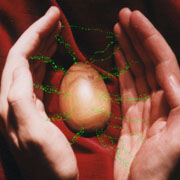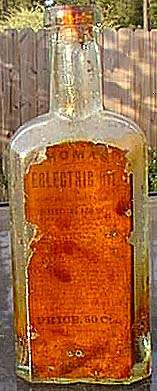
The prevalence of use of holistic health care practices in the United States has been growing by leaps and bound
through the past several years. Articles on alternative medicine and holistic health have appeared in newspapers,
magazines, and even in mainstream medical journals.
A study from the New England Journal of Medicine (1993) , entitled "Unconventional Medicine in the United
States: Prevalence, Costs and Patterns of Use" sought to characterize the alternative health phenomenon. Researchers
used telephone surveys in an attempt to uncover who was using holistic therapies, how often, for how much money,
and why. They found an "enormous presence" of such therapies among Americans. They determined that one
in three adult Americans visited an alternative practitioner during 1990. The estimated number of visits to alternative
practitioners in 1990 was greater than the number of visits made by adults to all primary care physicians. The
amount of money spent out of pocket by Americans on unconventional therapies was concluded to be greater than that
spent out of pocket on hospitalizations. By sheer numbers, holistic practices seem to be quite prevalent indeed.

The study did not reveal any significant differences in patterns of use by sex or insurance status. Rates of
use were comparable in all sociodemographic categories investigated. Use of such therapies, however, did appear
to be more common among those with some college education than among those with none.
The study also determined that people using unconventional therapies most often were also receiving medical treatment
for their condition. Medical conditions
for which alternative therapies were most often sought include back problems, allergies, arthritis, insomnia, sprains
or strains, headache, high blood pressure, digestive problems, anxiety, and depression–all more chronic than acute
problems. Patients under unconventional care were also unlikely (in 7 of 10 cases) to tell their physicians about
the "other" treatment they received.
condition. Medical conditions
for which alternative therapies were most often sought include back problems, allergies, arthritis, insomnia, sprains
or strains, headache, high blood pressure, digestive problems, anxiety, and depression–all more chronic than acute
problems. Patients under unconventional care were also unlikely (in 7 of 10 cases) to tell their physicians about
the "other" treatment they received.
A search through the scientific literature for citations of this survey yielded 591 results. In other words, between
1993 and early 2000, 591 articles were written which cited this particular alternative health study. Interest in
holistic health, across the country, seems to be only on the rise.
At the time of the 1993 survey, most users of unconventional therapies paid for the entire cost out of pocket.
This is likely due to the low insurance coverage available for holistic practices. However, since 1993, such coverage
has increased. As of June of 1999, a study run by a health care organization in San Francisco determined that 67%
of health maintenance organizations (HMOs) in 13 states include in their coverage some form of alternative health
care. The primary reason given by HMOs for their coverage was consumer demand, which was characterized as "moderate"
or "strong." It appears, then, that the prevalence of holistic medicine is dependent on the interest
of the community in which it resides.